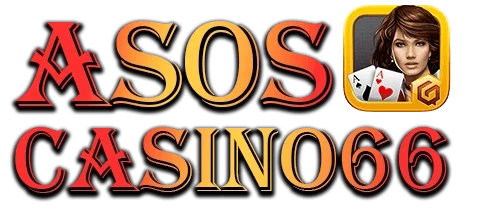November 20, 2025
No Comments
The landscape of video gaming has been profoundly shaped by Sony’s PlayStation brand, offering harum4d generations of players unparalleled adventures, groundbreaking narratives, and innovative gameplay mechanics. From its revolutionary entry into the 3D gaming space to its current status as a market leader, PlayStation consoles have consistently delivered some of the “best games” ever conceived. Alongside its home console dominance, the PlayStation Portable (PSP) carved out its own significant niche, proving that console-quality experiences could fit right into the palm of your hand, solidifying a legacy that continues to resonate with gamers worldwide.
What truly defines a “best game” transcends mere graphics or commercial success; it encapsulates an experience that leaves an indelible mark. These are titles that innovate, tell compelling stories, forge unforgettable characters, or present gameplay loops so addictive they redefine genres. Whether it’s the visceral thrill of combat, the intricate puzzle of a narrative, or the sheer joy of exploration, the truly great games captivate and transport players to worlds beyond imagination. The PlayStation ecosystem, spanning its various iterations and its beloved handheld, has been a fertile ground for such masterpieces, pushing boundaries and setting new standards for interactive entertainment.
The journey through PlayStation’s storied history begins with the original PlayStation (PS1), a console that single-handedly ushered in the era of 3D gaming. Titles like *Final Fantasy VII* captivated millions with its epic, emotional narrative and revolutionary CGI cutscenes, cementing its place as a JRPG titan. *Metal Gear Solid* redefined stealth action with its cinematic presentation and complex storytelling, proving video games could be as engaging as Hollywood blockbusters. Not to be outdone, *Resident Evil* birthed the survival horror genre, terrifying players with its claustrophobic environments and grotesque monsters. These games, among countless others, established the PlayStation as a powerhouse of creativity and innovation, setting a high bar for future console generations.
Following the immense success of the PS1, the PlayStation 2 (PS2) arrived, becoming the best-selling console of all time, largely thanks to its unbelievably deep and diverse library of PlayStation games. The console was home to iconic franchises that reached new heights, such as *Grand Theft Auto III* and its successors, which revolutionized open-world gameplay. *God of War* introduced Kratos, a character who would become synonymous with visceral action and Greek mythology-inspired mayhem, while *Shadow of the Colossus* offered a breathtakingly unique boss rush experience with profound artistic merit. The PS2 era was a golden age, producing a seemingly endless stream of top-tier titles that catered to every conceivable taste, from groundbreaking RPGs to frenetic action games and everything in between, solidifying its reputation as a true legend in gaming history.
The PlayStation 3 (PS3) navigated the challenging transition to high-definition gaming, eventually hitting its stride with a robust collection of exclusive PlayStation games that showcased its hardware capabilities. Naughty Dog’s *Uncharted* series redefined cinematic adventure, blending thrilling set pieces with charming characters and breathtaking visuals. Later in its life cycle, the same studio delivered *The Last of Us*, a masterclass in narrative design and emotional storytelling that garnered universal critical acclaim and became a benchmark for mature, story-driven experiences. These titles exemplified the PS3’s potential, demonstrating that powerful hardware could be harnessed to create truly immersive and emotionally resonant stories, pushing the boundaries of what video games could achieve.
The PlayStation 4 (PS4) continued this legacy of excellence, becoming another incredibly successful console largely due to its commitment to delivering critically acclaimed first-party PlayStation games. The 2018 reboot of *God of War* reimagined Kratos for a new generation, offering a mature, emotionally resonant narrative alongside incredibly satisfying combat. *Marvel’s Spider-Man* finally delivered the definitive web-slinging experience, allowing players to swing through a vibrant New York City with unparalleled freedom and fluidity. *Horizon Zero Dawn* presented a stunning post-apocalyptic world teeming with robotic dinosaurs, combining compelling world-building with engaging combat and exploration. These PS4 exclusives were not just games; they were monumental achievements in storytelling, graphics, and gameplay, further cementing PlayStation’s reputation for quality.
Currently, the PlayStation 5 (PS5) is building upon this rich heritage, introducing cutting-edge technology like lightning-fast SSDs and adaptive haptic feedback. While still early in its life cycle, it has already presented compelling next-generation experiences. Titles like *Returnal* offer a challenging, roguelike third-person shooter with incredible atmosphere, while *Ratchet & Clank: Rift Apart* showcases the console’s visual prowess and seamless interdimensional travel. These new PlayStation games hint at an exciting future, promising even more innovative and immersive experiences that leverage the PS5’s unique capabilities, continuing the brand’s tradition of pushing technological and creative boundaries.
Beyond the home console experience, the PlayStation Portable (PSP) emerged as a true innovator in the handheld market. It wasn’t merely a device for casual games; the PSP brought console-quality PlayStation games to a portable format, a feat that felt revolutionary at the time. Games like *God of War: Chains of Olympus* and *God of War: Ghost of Sparta* delivered the epic scale and brutal combat of their console counterparts, flawlessly optimized for the smaller screen. *Monster Hunter Freedom Unite* became a massive phenomenon, especially in Japan, offering hundreds of hours of challenging monster-slaying action. The PSP also hosted excellent exclusive entries in popular series, such as *Final Fantasy VII: Crisis Core*, a poignant prequel that deepened the lore of one of gaming’s most beloved universes, and robust open-world titles like *Grand Theft Auto: Liberty City Stories*. These PSP games proved that portable gaming could offer deep, rich experiences previously confined to living rooms, truly empowering players to take their favorite worlds with them wherever they went.
In conclusion, the journey through the best games on PlayStation consoles and the PSP is a testament to the enduring power of interactive entertainment. From the pioneering 3D worlds of the PS1 to the unparalleled libraries of the PS2 and PS4, and the ambitious handheld adventures of the PSP, Sony’s gaming platforms have consistently pushed the boundaries of what games can be. These iconic titles are not just relics of the past; they are cultural touchstones that have shaped the industry and left an indelible mark on the hearts and minds of millions. Their legacy continues to inspire, reminding us of the profound impact great games can have, whether played on a massive TV screen or within the palm of our hands.









